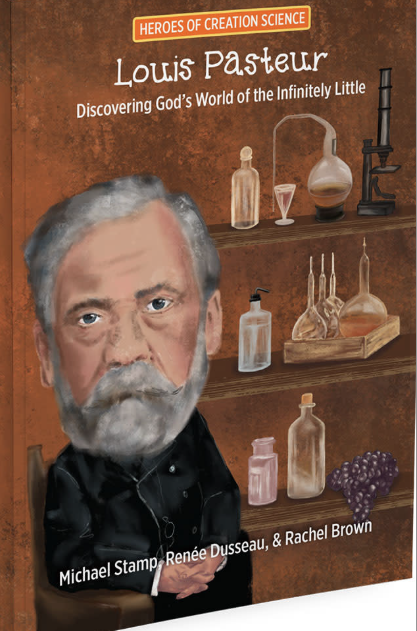Recently scientists finished the detailed study of each human chromosome. The whole effort, begun in the 1980s, ended when the analysis of human chromosome number 1 was published on May 18, 2006. Since each of these strings of chemical code or genetic information is so different, allow me then to introduce you to some of your own chromosomes.
There are 22 different chromosomes which can be found in the nucleus of every human cell. In pictorial representations of these chromosomes, scientists usually arrange them from longest to shortest, and number them accordingly. There are also two chromosomes involved in gender determination: the large X chromosome and the small Y chromosome.
Chromosome number 1, since it is the longest, not too surprisingly also represents the largest amount of information. It controls more than 3100 packets of information which affect specific body characteristics. Each packet of information, or gene, typically calls for the synthesis of a single protein. The basic idea, although simplified, is that the physical characteristics of each individual are determined by the genes.
Not only is chromosome number 1 very long, but it is also “gene dense”. Of all the chemical information present on human chromosomes, scientists have only been able to find genes (protein coding information) on 1-2% of the entire length of DNA. Some chromosomes contain more packed genetic information than others. The average for the whole human genome (all the chromosomes considered together) is 7.8 genes per million units of information (a unit is like an individual letter in a word). Thus in a million letters, on average, there is coding for only 7.8 proteins. Chromosome 1 however, contains 14.2 genes on average per million units of information. These units are called nitrogen bases, or bases, or nucleotides. Scientists represent this as 14.2 genes/Mb.
Scientists have no idea why there are such vast stretches of DNA in the human genome which do not code for proteins. Other kinds of organisms lack this feature. Scientists used to call this non-coding material, junk or nonsense DNA. They considered that some genes might have been left over from previous evolutionary uses and are no longer needed. These people are not so ready to label anything as junk any more. They now suspect that some of this information may be involved in signaling between cells, or various other regulatory activities.
Chromosome 1 is actually the third most gene-dense chromosome, while the most dense is found way down the list at chromosome 19. With a gene density of 26.2 genes/Mb, although it is very short, chromosome 19 contains about 1500 genes. The second most gene-dense chromosome is number 17, also way down the size range. With 16.2 genes/Mb, it contains 1266 genes. Amusingly, the most gene-poor chromosome is chromosome 18, in size just between numbers 17 and 19. Chromosome 18 has 4.4 genes/Mb and only 337 genes. Even at first sight, it is apparent that each chromosome is entirely different in character from the others.
Chromosome 11 is one of the most gene-rich chromosomes. An important claim to fame of this chromosome is the large number of genes which contribute to our sense of smell. This sense involves hundreds of different kinds of sensors in the nose. Each type of sensor responds only to a single part of a large molecule. Our sense of smell is the blended perception of many different chemicals perceived at the same time. Each sensor type is controlled by an individual gene. Of the 856 olfactory (smell) receptor genes in the human genome, more than 40% of them are located on this chromosome.
Chromosome 15 is one of seven human chromosomes with large sections present in duplicate sequences. For example, there are 37 nearly full-length copies of a certain sequence on this chromosome. Nobody knows why they are there. There are also two copies on the Y, male-determining chromosome, and one each on chromosomes 2 and 10. Moreover almost 700 genes have been identified on this chromosome.
Chromosome 18 has the lowest gene density of any human chromosome. One of the interesting features of this chromosome are 24 gene deserts. A gene desert is a length of DNA 500,000 nitrogen bases long or longer, which contains no protein coding information. On this chromosome, 28 million nitrogen bases or 38% of the total chromosome length are considered deserts. The sparsest region contains only 3 genes in 4.5 million nitrogen bases.
Probably because the genes are so scarce here, they are easier to study. One remarkable feature, also noted on chromosomes 1 and 11, is the overlapping of genes. This means that part of the coding sequence for one gene, also forms part of the coding sequence for an adjacent gene. This discovery demonstrates that genes are not obvious units, but blocks of information which can in fact overlap. Scientists discovered 59 pairs of overlapping genes on this chromosome.
Another strange phenomenon, very apparent on this chromosome as well as on others, is “alternative splicing of genes”. The normal situation involves the copying of a block of DNA code. The process is not however finished at this stage. Along come special enzymes which snip out large chunks of this information. The removed chunks are called introns. Other enzymes reattach the remaining sections (called exons). On chromosome 18, there are typically many exons which must be glued together to form the practical information unit or transcript (formerly called the gene). Appropriate enzymes glue together the exons in various different orders. Some exons may come from stretches of DNA far away from others to which they are later attached. The opportunities for variation are readily apparent. Each small section of code can be used in many different genes.
The capacity for the cell to synthesize different proteins from the same block of information is stupendous. This phenomenon represents highly compressed information. Considering how every protein must be extremely precisely produced, this storage and retrieval system is indeed an impressive mark of design. Many genetic diseases result from a small mistake in a gene’s information. These demonstrate how precisely the system needs to function for normal healthy individuals.
Of the 22 different chromosomes found in each person’s cells, one set is inherited from the mother and another set is inherited from the father. There are also two other chromosomes, the gender determining chromosomes. Every person receives an X chromosome from the mother. The father can contribute either an X chromosome or a Y. The X chromosome exhibits low gene density (7.1 genes/Mb) but since it is long, there are comparatively speaking, a lot of genes. Almost 1100 genes have been counted on the X chromosome
By comparison, the Y chromosome is small. Besides 12 genes which control non-sexual characteristics, there are 11 others which are expressed in the male sex organ. Most of these latter genes are located in a unique section of the chromosome involving repeating sequences, the most spectacular of which are the palindromes. These are sequences of letters which can be read from either end with identical results (e.g., madamImadam).
These are very hard to design, yet on the Y chromosome there are 8 massive palindromes, at least six of which contain genes. The palindromes are typically about one million nitrogen bases long. One really spectacular one is 2.9 million nitrogen bases long with 2 smaller palindromes nested within it. These structures help the cell maintain accuracy of the Y chromosome. One arm of a palindrome acts as a standard that the other half can be corrected to match. This is important since there is no similar Y chromosome in the cell with which it can be compared for correction.
What amazing sophistication we see within every human cell! With what finesse we have been designed. Our imaginations could never have conceived of such details, much less could chance have produced this exquisite information system. Evolution theory is certainly in trouble.
Margaret Helder
October 2006
Subscribe to Dialogue






